Indexed Beings
What can science and knowledge production look like, if we begin with the premise that other-than-humans can know, act, and produce their own worlds?
Indexed Beings (working title)
Indexed Beings is the second film in a trilogy of artist films which I am making as part of my practice based PHD research at Northumbria University. The topic looks to explore our relationship with non or more-than-human carers, this time focussing on plant sentience. I travelled to Mocoa, Putumayo in Colombia where Indigenous communities including the Inga, Cofan, Siona and Kamentsá who live in the area, use the plant medicine, Yagé - more commonly known in the West as Ayahuasca, an entheogenic plant - which communities use to connect to the entities of the forest.
Background
During 2022, I worked with Hernando Chindoy Chindoy, former Inga Leader and co-founder of the indigenous university, Devenir Universidad, director of Wuaskikamus – Guardians of the Earth initiatives, who was introduced to me by the Colombian artist, Felipe Castelblanco. I was researching the use of Yagé. I was interested in learning about indigenous cosmologies embedded in these ancient tools of care, and the ineffable connections which emerge when these more-than-human entities or plant intelligences look after human beings. I wondered whether we could work with these intelligent, psychedelic, (caring) plant entities and how might the human actor function, or be compromised in these assemblages?
The Dispute
During this time I also met Jorge Contreras (pictured above), director of the Ethnobotanical Herbarium which is located in the town of Mocoa after an introduction by Vanessa Goksch (Intermumdos). The herbarium bridges scientific, campesino, black and indigenous knowledge systems by collecting plant specimens and recording the specific human relationships with the plants by various communities. During the conversation, Contreras revealed a contentious disagreement he had recently been involved in, where a local Taita (shaman) had disputed the methodologies of collecting plant-specimens and keeping them on shelves in a scientific laboratory. This is because his community view plants as autonomous, sentient entities. Contreras explained how the Taita had arrived at the lab, angry and concerned. Contreras had then been moved to defend his Western knowledge system of collecting plants. This was because he believed this Western knowledge system was an important tool in the defense of the territory, from mineral exploitation or other extractive pursuits. This perspective was contested over the course of an afternoon, whereby the Taita laid out his own indigenous view of the forest as intelligent, sacred and connected and therefore un-collectable.
This new artist film centres on a re-enactment of this dispute in the herbarium in Mocoa. My participatory approach, which employs performance and film is conceived as a visceral, multi-dimensional field enmeshing indigenous and scientific perspectives, to enable co-learning across these cosmologies. If plants mutually tend to and sustain human health, and can know, act, and produce their own worlds, the film asks how this might affect scientific knowledge production?
Workshop at Centro Experimental Amazonico, performance in the Herbarium and the making of the film.
On the 2nd October 2023, a workshop was held at Centro Experimental Amazonico (CEA) with members of the local indigenous community to develop the script for the film with Manuel Mueses and team at the ethnobotanical lab. Copyright for the film is distributed between the main collaborators, Helen Knowles, Manuel Mueses, Jorge Contreras and Soraida Chindoy.
The project has been developed with staff at the Herbario Ethnobotanico del Piedemonte [1] based in Mocoa, Putumayo, Colombia with: Director, Jorge Contreras, members of Colectivo Selvas Vivas, Puerto Guzman, Manuel Mueses; Centro Etnobotanico, director and founder of Sana que Sana alongside members of the Kamëntsá, Inga, Cofan and Siona community who are indigenous to the territory of Putumayo, Colombia. Ethical considerations were supported by Felipe Castelblanco (University of Applied Sciences and Arts Northwestern Switzerland FHNW). Translation in Colombia was supported by Professor in Latin American film and culture, Deborah Martin, (UCL), transcription and translation of material has been supported by the University of Essex and University of Sheffield, Ross Hambleton, James R McNally and Anna Armijo Gallardo. Sound Disposition (UK) sponsored the project by loaning sound equipment and Northumbria University provided a travel grant for Helen Knowles’s return flight.
A massive thank you to everyone involved so far for all the support and good will, kindness and hospitality during my stay in Mocoa.
1.The Herbario Etnobotanico del Piedemonte is based in the Centro Experimental Amazonico of the Andean Amazonian Foothills Jajen Saima’a. It is based in Mocoa and was founded by the biologist Jorge Luis Contreras-Herrera, based on a collection of plants collected in the Cauca half boot, within the framework of the project “Guardians of botanical knowledge” led at the time by the NATURAMAZONAS alliance. It is the first ethnobotanical herbarium in Colombia and aims to document the biodiversity of plants and the different cultural, spiritual and social relationships that the communities of this region of the country have with plants.
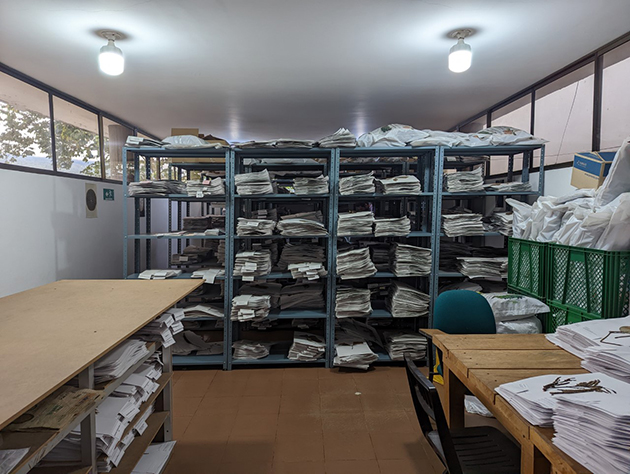
The Herbario Etnobotanico del Piedemonte, Mocoa, Putumayo. Photo by Helen Knowles
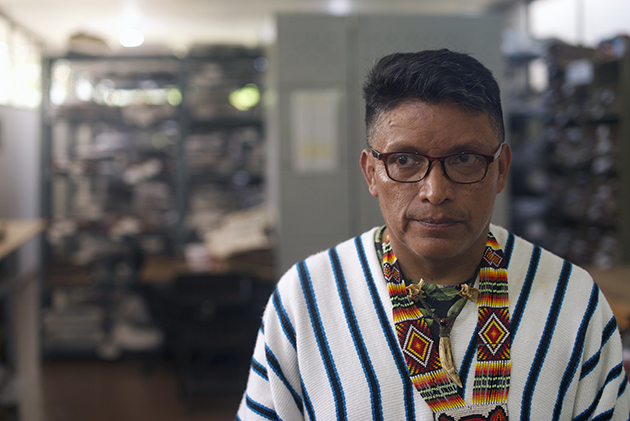
Manuel Mueses, performing as the Taita in the film ooVoo. Ethnobotanical Herbarium, Mocoa.
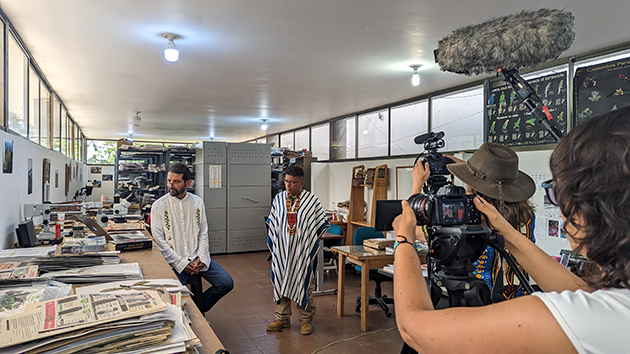
Filming in the laboratory at the Ethnobotanical Herbarium, Centro Experimental Amazonico. Jorge Contreras (back left) and Manuel Mueses (back right). Helen Knowles and Luisa Sossa on camera.
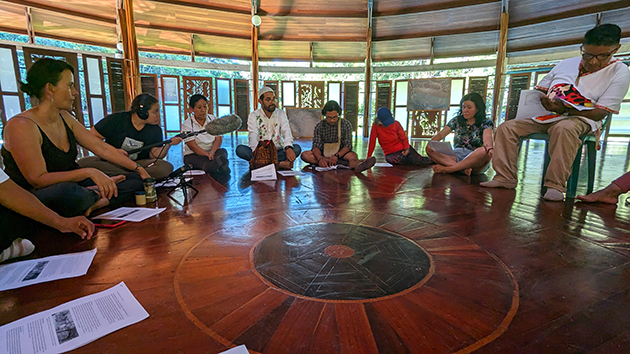
Workshop held in the Maloka at CEA. Left to right, Luisa Sossa, Linybed Vargas, Rosario Charito, Jorge Contreras, Abner Ortiz, (unknown random attendee), Ana Carolina Urrego Macias, Manuel Museses. Photo: Helen Knowles.
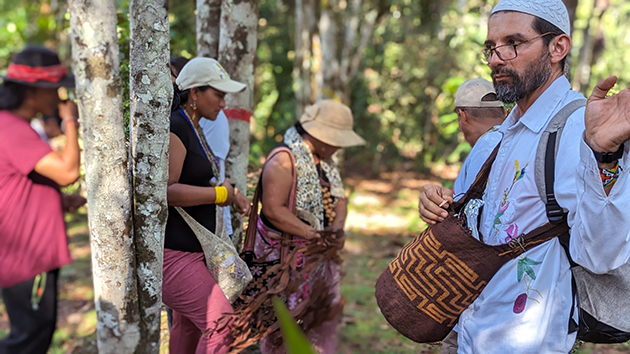
Left to right: Lumuna-Villa Olimpica, Soraida Chindoy, Edilma Chindoy Buesaquillo and Jorge Contreras (right), attending the workshop at CEA learning about the rare cinnamon trees.
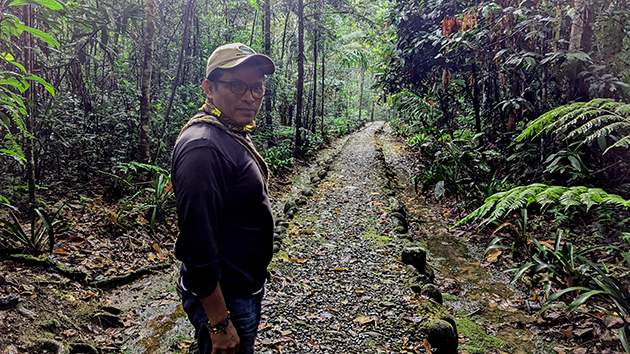
Manuel Mueses leading the way to his herbal garden at CEA.